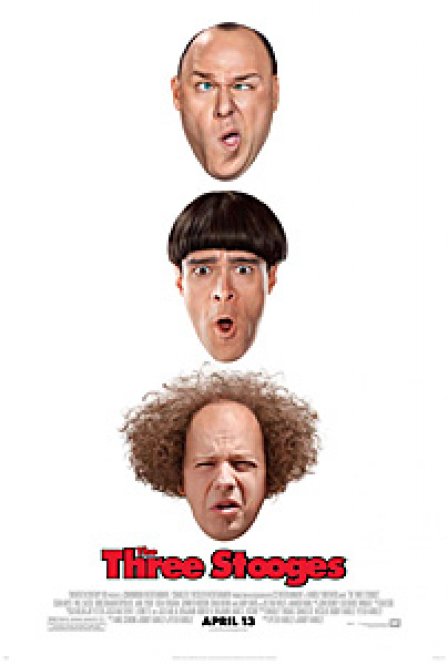The Three Stooges were the country’s most popular short-format comedians back in the pre-SNL decades when Americans took their short-form seriously and regularly showed up for it at the movie theaters. The Stooges’ fame was also in the days before media went mass, so that a guy like Harry Cohn, head of Columbia Pictures at the time, could effectively swindle Larry, Curly, and Moe out of the millions of dollars that their comedy deserved. Apparently, Cohn went to extremes to hide from the Stooges their own success, and they went 23 years as major stars without any real sense of the throngs of Americans who thought they were the bee’s knees. That also meant they missed out on their chunk of the fortune Cohn raked in off their blockbusting popularity. Tangentially related to Cohn’s cruelty, Curly (born Jerry Howard), the girthy Stooge with the shaved head, was so sensitive about his weight that he drank himself to an early death despite being the most popular member of the trio. He was replaced, of course, and the act went on all the way into the 1970s, when the Stooges were in their own 70s and barely able to perform.
Wild American success, Machiavellian corruption, alcoholism, early death: the story of the Three Stooges is practically screaming for a biopic. Instead, Peter and Bobby Farrelly have made a glib, modernized imitation of the comedy act for which the Stooges were known, cast with second-tier comedians and infused with broad irony that is unmistakably Farrelly and only occasionally, accidentally, Stooge. Originally, there was to be something special about the project: the Farrelly brothers once had Sean Penn, Jim Carrey, and Benicio del Toro as Larry, Curly and Moe, respectively, but each of those great actors eventually dropped out. To think of the movie that might have existed if they hadn’t is to put oneself through the kind of torture usually reserved for wondering about the movies Truffaut might have made if he hadn’t died of a brain tumor at 52. But if you’re going to imagine the better movie — the one with Penn, Carrey and Del Toro — then you might as well mentally replace the Farrellys with Truffaut himself (a great comedian) and really shoot the moon. With these types of movies, you take what you can get.
If you grant that the Farrellys made a number of missteps in setting up their Three Stooges — the casting, the tone, the attempt to imitate one-of-a-kind comic genius — then you might get past their folly and on to the most salient qualities of the movie they’ve made.
Not surprisingly for veteran directors of successful comedies, the Farrellys have come up with a number of fairly brilliant gags. They named a nun Sister Mary-Mengele and gave the part to Larry David. They worked in a way to show a cop being defibrillated with hot clothes irons instead of medical instruments. My favorite bit had the Stooges stalking through a maternity ward playing out their own version of a wild west showdown using baby penises for six-shooters. Then, there’s the fact that the three guys playing the Stooges — Sean Hayes, Will Sasso, and Chris Diamantopoulos — are all ace physical comedians, which goes a long way towards making up for the fact that they’re doomed to be ersatz copiers of the originals.
Where the real Stooges wisely confined themselves to shorts (and didn’t know the meaning of product placement), the Farrellys have stuck theirs into a feature-length story straight out of a rote 90s comedy. There are many moments when the plot and intentionally cheap sets of The Three Stooges make the film feel like a slightly classier version of Billy Madison or Dumb and Dumber — the kind of movie that piles on joke after joke about dumbness for dumbness’ sake. The Farrellys’ recipe for Stooge-ness is to overcomplicate the dumbness in hopes that they’ll wind up with wit. Where the original Stooges could let a narrative be sublimely silly in order to resolve it in the most absurd way possible as part of the joke, the Farrellys more often than not will use a gag as a get-out-of-plot-free card, because, whether it makes sense or not, they need to keep their story chugging along. Why? So they can work Moe into the cast of Jersey Shore and sneak in a gag where he crams a microwave down on The Situation’s head? So Curly can hold an iPhone up to his eye and then declare that it doesn’t work? It seems cruel to make such concessions to the studio-driven times within a tribute to a trio of comedians who found themselves, at the end of their career, lifelong victims of their own studio.

